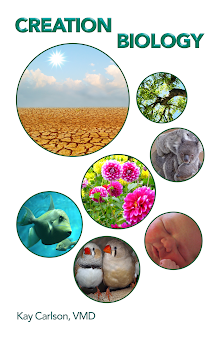
Most people are familiar with atoms. They have a center made of positive and neutral particles, called the nucleus, with a cloud of negative electrons encircling it. It is amazing to me that the number of these particles make such a big difference in the way the atoms combine with each other to make the huge variety of things we see in the world, including the world itself. These atoms move in a zigzag way which we call "random" and they combine with each other depending on their qualities, but also where they happen to be near each other "by chance."
Many people assume that randomness is the same as non-design, and order is the same as design. I do not believe this is correct, and I think it causes some confusion when we talk about design in nature, especially what we see in biological systems. Yet chemistry does have a predictable behavior, under what is called the Law of Mass Action (Wikipedia description HERE). Even so, an underlying characteristic in this physical law is probabilistic behaviors of atoms and molecules. So we are not getting away from randomness when we move from individual atoms and molecules to groups of them.
As I said before, the random movement of atoms is important for certain things. It helps mix the molecules in our atmosphere so we can breathe. Imagine walking into a pocket of air that has no oxygen. Where would we run to find it? Without random movements, we couldn't have mixtures of liquids with two or more things. They would otherwise stay separated, like water and oil but worse.
Therefore, if God made everything, the random movements of the atoms were also part of the design. Randomness is not opposite design. Genesis 1:2 tells us (NABRE): "the earth was a formless wasteland, and darkness covered the abyss, while a mighty wind swept over the waters." Leaving aside the word "waters," the opposite of design seems to be a dark abyss--nothingness or the void. Perhaps "waters" is metaphorical. That goes along with our Nicene Creed in which we say we believe God is the Creator of all things seen and unseen.
It is a feature of Intelligent Design Theory to see design in the workings of DNA and proteins in the cell. The trouble is, ID proponents compare it to randomness, when this is also design. So they are not proving design, just the discrepancy between biological and non-biological formations. Now this discrepancy is important, but it does not define design.
That is why faith is really more important than science. If you believe, it sets the groundwork for studying the rest of God's creation. All things are designed, and science is the study of created physical objects.








